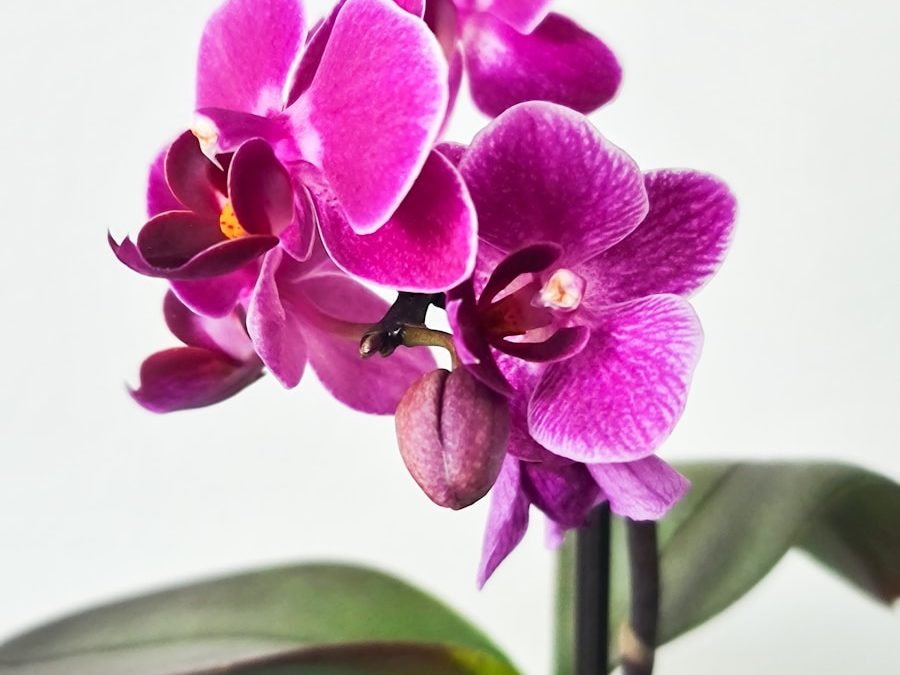Contents
- 1 Best Fertilizer for Orchids Indoors (Beginner’s Complete Guide)
- 1.1 Why Orchids Need Specialized Fertilizer
- 1.2 What to Look for in Orchid Fertilizer
- 1.3 Best Fertilizers for Indoor Orchids
- 1.4 Seasonal Feeding Schedule for Orchids
- 1.5 Comparing Different Fertilizer Types
- 1.6 Practical Tips for Fertilizing Orchids Indoors
- 1.7 Common Mistakes to Avoid
- 1.8 Natural Alternatives to Store-Bought Fertilizer
- 1.9 FAQ: Orchid Fertilizer
- 1.10 Related Articles
- 1.11 Final Thoughts on Orchid Fertilizer
Best Fertilizer for Orchids Indoors (Beginner’s Complete Guide)
Orchids are some of the most beautiful and popular indoor plants, but they can also be fussy when it comes to feeding. Unlike typical houseplants, orchids need the right balance of nutrients to produce their stunning blooms. Using the wrong fertilizer—or none at all—can lead to weak roots, limp leaves, and fewer flowers.
In this beginner’s guide, we’ll cover the best fertilizers for orchids, how often to feed them, seasonal schedules, and common mistakes to avoid.
Why Orchids Need Specialized Fertilizer
Orchids grow differently than most houseplants. Instead of sitting in dense soil, they thrive in airy orchid bark or moss. Because of this:
Nutrients wash out quickly during watering.
Roots absorb faster but are more sensitive to chemical burns.
Blooming cycles require different care than leaf growth.
This means orchids benefit most from gentle, balanced feeding on a regular schedule.
What to Look for in Orchid Fertilizer
When shopping for orchid food, keep these points in mind:
Balanced NPK ratio – A fertilizer close to 20‑20‑20 is ideal for year‑round feeding.
Dilutable liquid form – Easier for roots to absorb without risk of overfeeding.
Added micronutrients – Calcium, magnesium, and iron support root health and stronger blooms.
Best Fertilizers for Indoor Orchids
1. Liquid Orchid Fertilizer
A diluted liquid fertilizer ensures even distribution and prevents burning.
Check Orchid Focus Liquid Feed on Amazon.
2. Orchid Fertilizer Spikes
Slow‑release spikes are convenient if you forget to feed weekly. They provide steady nutrients for up to 2 months.
View Miracle-Gro Orchid Plant Food Spikes here
Seasonal Feeding Schedule for Orchids
Feeding orchids isn’t “one size fits all”—adjusting for the season is important:
Spring – Orchids wake up from dormancy and begin active growth. Fertilize weekly with a diluted 20‑20‑20 or balanced orchid food.
Summer – Continue weekly feeding. This is when orchids use the most energy for new leaves, roots, and flower spikes.
Autumn – Gradually reduce to every 2–3 weeks as growth slows. Focus on maintaining healthy roots.
Winter – Orchids rest. Fertilize once a month at half strength to avoid stressing the roots.
This cycle mimics the orchid’s natural rhythm and encourages reliable blooms.
Comparing Different Fertilizer Types
Liquid Fertilizer – Fast-acting, easy to dilute, ideal for beginners. Needs regular application.
Slow-Release Spikes – Great for busy growers who forget to feed often. Nutrients release steadily but less control over dosage.
Organic Fertilizers – Gentle and eco-friendly, but results take longer. Best paired with occasional liquid feeding.
A balanced approach is using liquid feed weekly with a slow-release spike as backup.
Practical Tips for Fertilizing Orchids Indoors
Always water orchids before fertilizing to prevent root burn.
Stick with the “weakly, weekly” rule—better to feed lightly and often than heavily.
Use a clear orchid pot when possible—it helps you monitor root health.
Switch to a bloom-boosting formula (higher phosphorus) once flower spikes appear.
Common Mistakes to Avoid
Overfeeding – More isn’t better; it burns delicate roots.
Fertilizing dry roots – Always hydrate roots first.
Using regular houseplant food – Too much nitrogen promotes leaves, not flowers.
Natural Alternatives to Store-Bought Fertilizer
Banana Peel Water – Rich in potassium, great during bloom cycles.
Aquarium Water – Diluted fish tank water provides gentle nitrogen.
Compost Tea – A mild organic feed for healthy roots.
FAQ: Orchid Fertilizer
Q: Do orchids need fertilizer all year round?
Yes, but frequency changes—weekly in growth season, monthly in winter.
Q: Can I use coffee grounds on orchids?
Not directly; they’re too acidic. Instead, compost them first.
Q: Should I fertilize orchids when they are flowering?
Yes—feeding during bloom helps flowers last longer and supports reblooming.
Related Articles
Final Thoughts on Orchid Fertilizer
Feeding your orchids the right way can mean the difference between weak, struggling plants and a vibrant display of blooms. Stick with a balanced liquid fertilizer, apply it “weakly, weekly,” and always water first to protect the roots.
Once you establish a routine, you’ll notice stronger roots, healthier leaves, and more frequent flowering. Orchids may have a reputation for being difficult, but with the right fertilizer, they’re surprisingly rewarding.
🌱 For more tips on orchid care, check the University of Connecticut guide on growing orchids.

